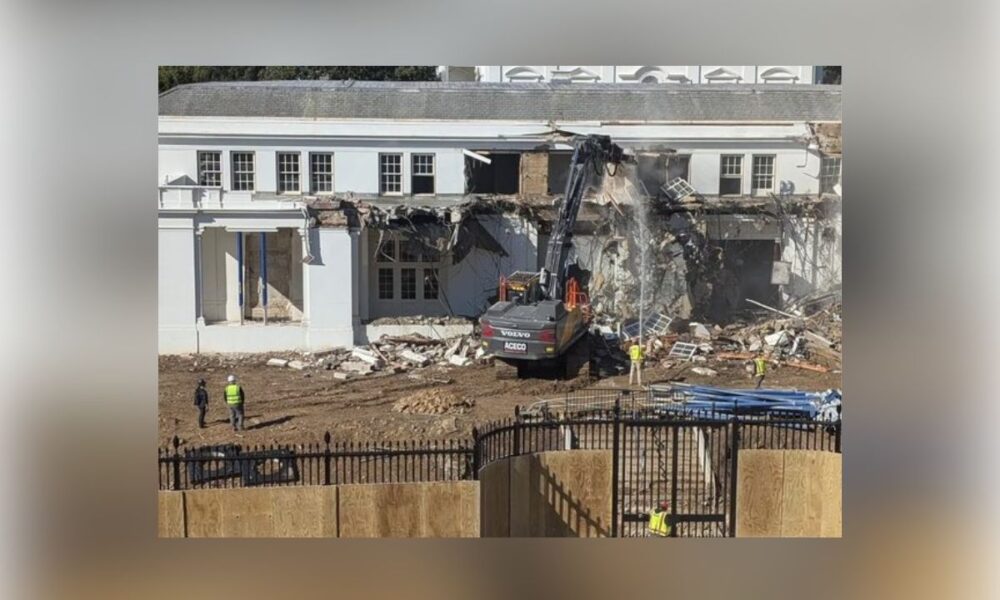After photos of demolition work on the White House East Wing went viral Monday, critics quickly denounced President Donald Trump’s plan to build a privately funded ballroom.
In July 2025, Trump said that the construction of the ballroom “won’t interfere with the current building. It won’t be – it will be near it, but not touching it. And pays total respect to the existing building, which I’m the biggest fan of. It’s my favorite,” Reuters reported.
However, photos circulating online show that large portions of the East Wing are being demolished. Meanwhile, employees of the U.S. Department of the Treasury, who have a clear view of the ongoing work from their office building next to the White House, have been warned not to share photos of it.
“Carelessly shared photographs of the White House complex during this process could potentially reveal sensitive items, including security features or confidential structural details,” the Treasury spokesperson said, per CNBC. “Out of an abundance of caution, we have urged our employees to avoid sharing these images.”
“Maybe it’s just the dislike of change on my part, but it seemed painful, almost like slashing a Rembrandt painting,” Douglas Brinkley, the presidential historian for the New York Historical Society, said of the demolition work, per WTOP News. “Or defacing a Michelangelo’s sculpture.”
“It’s not [Trump’s] house. It’s your house. And he’s destroying it,” Former Secretary of State Hillary Clinton posted on X.
On Tuesday, Trump acknowledged the work underway at the White House, commenting during a Rose Garden event, “You probably hear the beautiful sound of construction to the back. That’s music to my ears. I love that sound. Other people don’t like it. I love it,” CNBC reported.
The administration was quick to respond to criticism about the renovations, dismissing it as “manufactured outrage,” while pointing out that Trump is just following the precedent of previous presidents.
Since 1902, presidents have routinely altered the White House to meet contemporary needs. Theodore Roosevelt built the West Wing that year, replacing greenhouses from Thomas Jefferson’s era.
William Howard Taft expanded the West Wing in 1909, creating the first Oval Office. Franklin D. Roosevelt overhauled the wing in 1934, doubling its size and relocating the Oval Office.
The most dramatic transformation came under Harry Truman in 1948. His administration gutted the White House interior completely, preserving only the exterior walls during reconstruction.
Modern presidents continued the tradition of modifications. Richard Nixon converted FDR’s swimming pool into the press briefing room in 1970.
Gerald Ford installed an outdoor pool in 1975, funded entirely through private donations. Barack Obama resurfaced the tennis court for basketball in 2009 and added a kitchen garden.
Trump himself previously completed a tennis pavilion renovation in 2020. The new ballroom project aims to expand the White House’s capacity for hosting world leaders and dignitaries.
Presidential renovations have ranged from practical office expansions to recreational additions. Calvin Coolidge renovated the upper floors in 1927, while Herbert Hoover remodeled the West Wing in 1929.
The East Wing wasn’t built until 1942 under FDR. It originally concealed an underground bunker for wartime protection.
John F. Kennedy constructed the modern Rose Garden in 1962. Bill Clinton undertook restoration work in 1993.
The ballroom represents the latest chapter in the evolution of the White House. Private funding echoes Ford’s pool project, avoiding taxpayer expense for the expansion.


